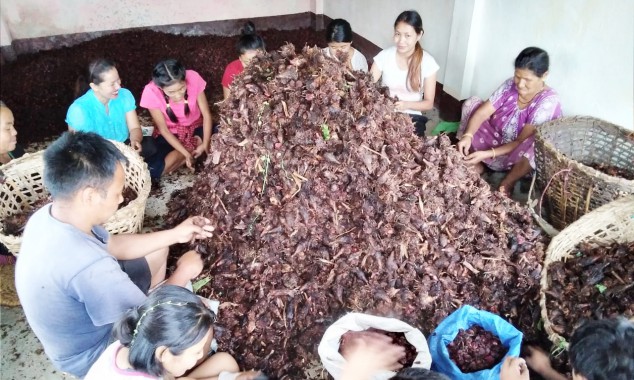




















Tuesday, Jul 06, 2021 08:00 [IST]
Last Update: Tuesday, Jul 06, 2021 02:25 [IST]
Incentives hiked for five cash crops, seven more vegetables included
GANGTOK,: Large cardamom growers in Sikkim can now hit a century in terms of cash incentive for every kg of the cash crop they produce.
The State government has enhanced the financial incentive for large cardamom from Rs. 20 to Rs. 100 per kg which gives a boost to dwindling large cardamom growers in Sikkim.
Further spicing up the encouragement for farmers here, the government incentives have also been hiked for other cash crops of Sikkim – ginger (Rs. 20 per kg), turmeric (Rs. 10 per kg), buckwheat (Rs. 10 kg) and orange (Rs. 20 per kg).
According to Horticulture officials, seven more vegetables have also been included in the government cash incentive to encourage the farmers of Sikkim. The incentivized vegetables are cabbage (Rs. 5 per kg), cauliflower (Rs. 7 per kg), green peas (Rs. 8 per kg), Dalley Khorsani (Rs. 20 per kg), radish (Rs. 7 per kg), carrot (Rs. 7 per kg) and kiwifruit (Rs. 25 per kg).
The decision to revise the cash incentive for the five cash crops and inclusion of seven new vegetables were taken during the recently held review meeting of Agriculture and Horticulture departments.
Speaking with SIKKIM EXPRESS, Agriculture & Horticulture minister L.N. Sharma expressed his gratitude to Chief Minister P.S. Golay for enhancing the cash incentives for the five Sikkim crops and adding seven more crops in the list.
“The highest incentive that a farmer can now get is Rs. 100 per kg for large cardamom. Overall, our farmers can get cash incentives for a dozen crops and this will definitely boost their income and production. It also lays the foundation for ‘Atma Nirbhar Sikkim’ in the field of agriculture and horticulture sector,” said the minister.
It was informed that under this scheme, a farmer can get a maximum incentive of Rs. 1 lakh (the upper limit) and under individual crop, a farmer can benefit up to Rs. 30,000 as maximum incentive.
Notifications on revised rates and the newly added crops would be issued within this week.
To get the cash incentive, the farmers have to sell their produce through Farmers Producers Organisation (FPO), cooperatives or the government-identified agencies. Records of crops produced and sold will be maintained by these organisations and based on their data, the incentives are directly credited to the bank accounts of the beneficiary farmers.
Horticulture secretary M.T. Sherpa informed that the department has disbursed around Rs. 34 lakh as cash incentives to the farmers during 2020-21 fiscal year. He appealed the farmers to take maximum benefit from the incentive scheme introduced by the State government.
The Rs. 100 per kg cash incentive for large cardamom should bring some cheer among the large cardamom growers of Sikkim. There are a sizeable number of farmers in Sikkim who cultivate large cardamom particularly in north and west districts.
However, 2020 had been a disappointing year for the Sikkim farmers as the prices of large cardamom fell sharply in September-October. As per reports, one maund (40 kg) of large cardamom was going for Rs. 16000-Rs. 17000, an all-time low and not even enough to cover the investment made. This was primarily due to Covid pandemic which disrupted the export facilities across the world.
CASH INCENTIVES *per kg
Cardamom: Rs. 100 (old rate Rs. 20)
Ginger: Rs. 20 (old rate Rs. 9)
Turmeric: Rs. 10 (old rate Rs. 5)
Buckwheat: Rs. 10 (old rate Rs. 4)
Orange: Rs. 20 (old rate Rs. 10)
Cabbage: Rs. 5
Green Peas: Rs. 8
Dalley Khorsani: Rs. 20
Radish, Cauliflower & Carrot: Rs. 7
Kiwifruit: Rs. 25
